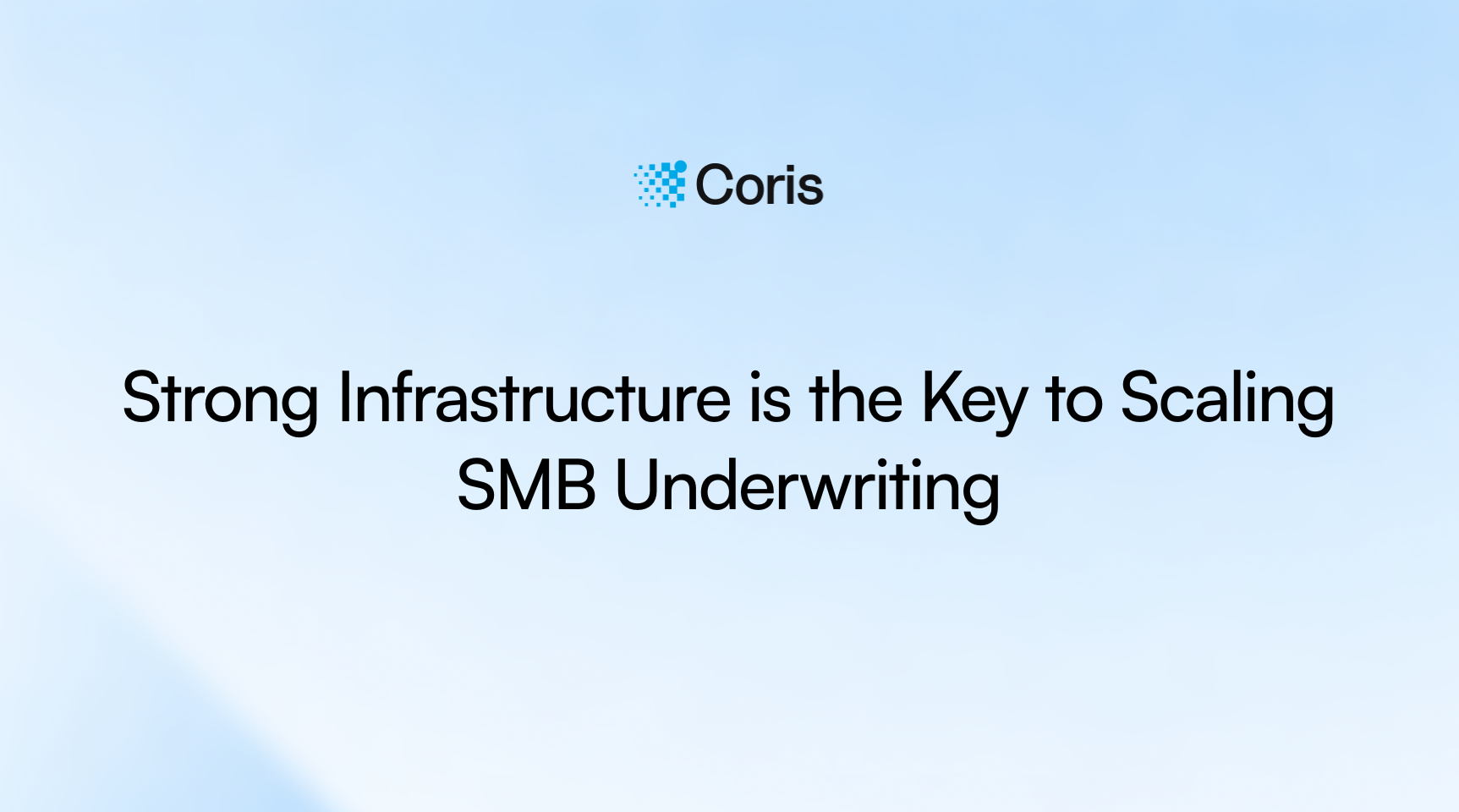5 Hidden Payment Risks—and How AI Blocks Them
Discover 5 hidden payment risks costing businesses millions and learn how AI-powered detection blocks them for superior fraud prevention and compliance.
Coris helps Vertical SaaS companies scale by automating underwriting and providing robust risk infrastructure, reducing operational costs while enabling faster, more accurate decision-making with both internal and external data.

Vertical SaaS companies grow very quickly because as they grow, they try to match their rate of LTV increase, which means many of their customers convert to using more of the fintech products. That causes them to make a lot of new hires as well.
However, company operational costs are a lot tighter these days, which is where Coris can help out.
We provide the right risk infrastructure and help automate underwriting, which is a key combo since that strong infrastructure is the path to scaling underwriting to match business growth.
SaaS companies aren’t experts in building or maintaining risk infrastructure, so they shouldn’t be the ones doing it — it’s a painful task.
Some of our team members built key risk infra at companies such as WePay, eBay and PayPal, where they had hundreds of engineers building risk infrastructure and maintaining it.
Larger companies have proportionally larger teams doing so.
That’s why the best path is truly to outsource that entire frustration to us.
We find that there are three areas that signal good health for automation and underwriting:
Even if a company isn’t working with us directly, we think there are some helpful frameworks that go beyond metrics to improve their underwriting environment.
We tend to suggest that companies ask themselves why they prioritize certain data, but don’t use data from other areas — for example, if they aren’t monitoring their online reviews, why is that?
Without the right underwriting framework, process creep occurs. Companies go through the steps they’ve been provided with and don’t consider their contemporary portfolio or customers.
That’s why we always ask our potential customers what they do after underwriting — if they don’t do any checks and are convinced their process is already great, we take a look and tend to find that that’s not true.
“Coris can help companies with stretched operational costs have the right infrastructure and underwriting. Without the right infrastructure, you can never scale your underwriting process to match your business growth.”
Beyond our main offerings, we see other advantageous data use cases for our clients. SaaS companies already have a hoard of great data about their customers such as from their invoices that covers product usage and the duration of the customer relationship.
That data SaaS platforms have on their customers should be used to help decision making and underwriting.
The best SaaS companies use their own data along with information that we provide, such as online reviews and website analysis, to make informed decisions. Working off of exclusively internal or external data leaves blind spots, but blending the two enables clear decision making.
While SaaS companies have offered embedded payments for a while now, they’re under more pressure than ever to offer even more financial products; options that fall into categories like banking, payroll, lending, charge card, you name it.
The catch is, offering more fintech means more underwriting and taking on more risk exposure.
Risk teams are under pressure more than ever to not only manage all of these, but with reducing engineering bandwidth available to them and staffing cuts/freezes that are prevalent in the current climate.
Any SMB could potentially use many financial products, so the SaaS company at hand needs to underwrite all of the products in the same place rather than building disparate systems. That’s where the importance of a robust infrastructure (like the one we offer) makes all the difference.